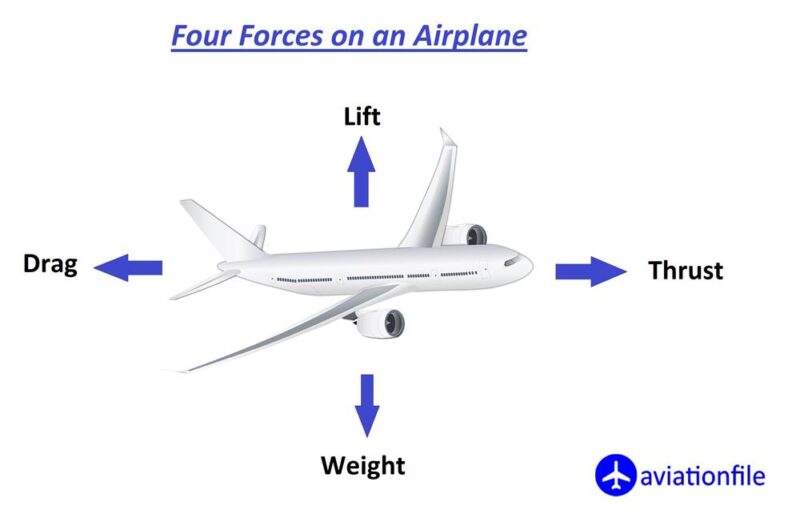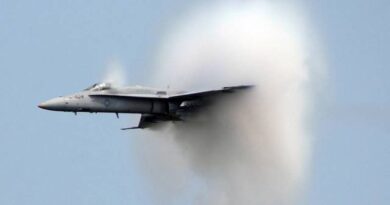Aviation Physics Concepts and Some Questions
Introduction
Aviation is one of the most fascinating fields of study that requires a deep understanding of physics concepts. Pilots, aircraft engineers, and aviation technicians need to know and apply physics principles to fly and maintain aircraft safely. In this article, we will explore some of the essential aviation physics concepts and their applications.
Newton’s Laws of Motion
Newton’s laws of motion are fundamental to understanding aviation physics. The first law states that an object at rest will remain at rest, and an object in motion will remain in motion with a constant velocity unless acted upon by an external force. This law is crucial in aviation, as it helps pilots understand the importance of maintaining a steady speed during flight.
The second law states that the acceleration of an object is directly proportional to the net force acting on it and inversely proportional to its mass. This law is essential in aviation because it helps pilots understand how much force is needed to make the aircraft accelerate or decelerate.
The third law states that for every action, there is an equal and opposite reaction. This law is crucial in aviation, as it helps pilots understand how the forces of lift and weight act on an aircraft during flight.
Aerodynamics
Aerodynamics is the study of how air flows around objects. It is essential in aviation because it helps aircraft engineers design aircraft that can efficiently move through the air. The two primary forces involved in aerodynamics are lift and drag.
Lift is the force that holds an aircraft in the air. It is generated by the wings and is proportional to the speed of the aircraft, the air density, and the shape and size of the wings.
Drag is the force that opposes the forward motion of an aircraft. It is generated by the friction between the air and the aircraft and is proportional to the speed of the aircraft, the air density, and the shape and size of the aircraft.

Bernoulli’s Principle
Bernoulli’s principle is essential in aviation because it helps pilots understand how the shape of the wings generates lift. It states that as the speed of a fluid (such as air) increases, its pressure decreases. This principle is applied to the shape of the wings, which are designed to create a difference in air pressure between the upper and lower surfaces. This difference in pressure generates lift and allows the aircraft to stay in the air.
Evaluation Questions
- What are Newton’s laws of motion, and how do they apply to aviation?
- What is aerodynamics, and why is it essential in aviation?
- How does Bernoulli’s principle help aircraft generate lift?
- How do the shape and size of the wings affect lift and drag?
- Why is it important for pilots to understand the physics concepts involved in aviation?
Conclusion
Aviation physics concepts are crucial for the safe and efficient operation of aircraft. Pilots, aircraft engineers, and aviation technicians must have a deep understanding of physics principles to ensure that aircraft can fly and be maintained safely. Understanding the concepts of Newton’s laws of motion, aerodynamics, and Bernoulli’s principle is essential for anyone involved in aviation. By applying these concepts, pilots can maintain a steady speed, generate lift, and keep their aircraft safely in the air.
References for this article:
- Halliday, D., Resnick, R., & Walker, J. (2013). Fundamentals of physics (10th ed.). John Wiley & Sons.
- Anderson, J. D. (2010). Fundamentals of aerodynamics (5th ed.). McGraw-Hill.
- Houghton, E. L., & Carpenter, P. W. (2003). Aerodynamics for engineering students (5th ed.). Butterworth-Heinemann.
- Kermode, A. C. (2016). Mechanics of flight (12th ed.). Pearson.
- Federal Aviation Administration. (2016). Pilot’s handbook of aeronautical knowledge. Skyhorse Publishing.
- National Aeronautics and Space Administration. (2022). Beginner’s guide to aerodynamics. Retrieved from https://www.grc.nasa.gov/WWW/K-12/airplane/bga.html.
- Khan Academy. (2022). Physics of flight. Retrieved from https://www.khanacademy.org/science/physics/fluids/density-and-pressure/v/bernoullis-principle-and-flight.


